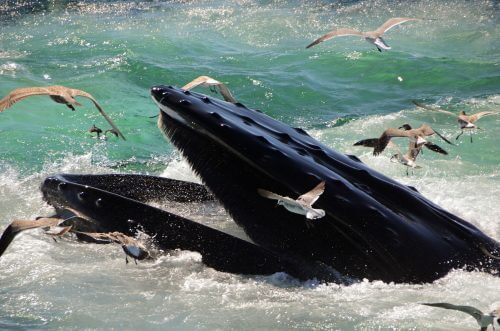Researchers have developed a new method for locating marine mammals in the vastness of the oceans, which will help to collect more accurate information about what is happening in the darkness beneath the waves and to understand the human impact on marine mammals

by Dr. Daniel Medar, angle, news agency for science and the environment
Scientists who study life in the ocean encounter many problems during their work. The main problem is that they have difficulty finding the animals they are studying. This is not really surprising, because the oceans and seas are huge - in terms of area, they cover twice as much space as all the land area on Earth. Moreover, most terrestrial creatures are limited to life in a thin layer that is only a few tens of meters thick: from a few meters below the surface of the ground (and in rare cases a few tens of meters), to those that live on the tops of trees tens of meters high. The animals in the oceans can be found in any body of water even at a depth of up to 10 kilometers.
Because of this problem, many studies take advantage of the sound-producing abilities of certain marine creatures, such as marine mammals. The researchers record their voices in different places on days and oceans, and thus can estimate their location throughout the seasons, can try and estimate their number, and differentiate between different activities such as hunting and courtship.
In existing sound analysis methods, a small number of microphones are used, recordings are made at a certain point and moved to a new point. The recordings of one field cell (several hundred square kilometers in size) last for days and even weeks. With these methods, only relatively strong voices can be distinguished and usually no more than two species are followed in one study.
However, recently a group of researchers from the United States and Norway took this field one step further - or deeper, if you will. They created an array of 160 underwater microphones that simultaneously record the voices. Using such a number of microphones makes it possible to eliminate background noise in a much better way compared to previous techniques. Therefore, the researchers achieved a much higher sound resolution that allows them to distinguish very weak sounds and thus locate and differentiate between different species much more easily and efficiently.
The researchers towed the microphone array behind a ship for two weeks. With the new and sensitive method, it is possible to sample an ocean area of about 100 square kilometers in 75 seconds (for comparison, the area of the State of Israel is about 20 square kilometers and its sea surface, including the economic waters, is about 26 square kilometers ).
Using the new method, researchers can follow many species in the marine space, over time and with great accuracy. For example, by listening to the sounds made by whales, they were able to map for the first time how different species use the spawning grounds of herring fish to devour in the Gulf of Maine in the northeastern United States. The researchers discovered that whales of different species tend to hunt herring in fixed and unique sites. There are those who devour more during the day and there are those who snack at night. It was also discovered that there is almost no overlap between the territories of the different species and it seems that they divide the territory between them in order to enjoy the abundance of food at the same time.
The most chatty creatures that researchers have caught are fin whales, Balaenoptera physalus), who made about 18 thousand readings a day. The second gossipers in the ranking were humpback whales, Megaptera novaeangliae), with over 2,000 readings on average per day. These species hunt in packs and they coordinate the hunt using sounds. That's why they are especially noisy while eating. Solitary species that hunt alone, do not talk to each other during the meal, and save the conversations for their leisure time.
This new research method will undoubtedly help researchers to collect more and more accurate information in all the oceans and seas, shed more light on what is happening in the darkness under the waves and also understand the human impact on marine mammals.
There are almost no acoustic studies of marine mammals in Israel. However, it was recently completed in Israel study New, in the framework of which Yotam Eldar Tsuriel from Makhmalyi (Research, Information and Assistance Center for Marine Mammals in Israel) conducted acoustic monitoring of marine mammals. The monitoring was carried out prior to the expansion of the Haifa Port and its purpose was to provide insights into the presence of marine mammals in the area, in order to minimize damage to them during the works.
